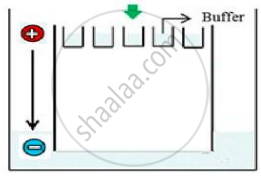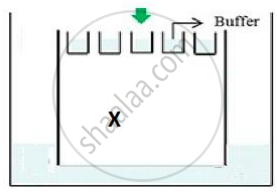Advertisements
Advertisements
Question
Collect 5 examples of palindromic DNA sequences. Better try to create a palindromic sequence by following base-pair rules.
Solution
Palindrome nucleotide sequences in the DNA molecule are groups of bases that form the same sequence when reading both forward and backward. Five examples of palindromic DNA sequences are as follows:

APPEARS IN
RELATED QUESTIONS
Explain with the help of a suitable example the naming of a restriction endonuclease.
Suggest a technique to a researcher who needs to separate fragments of DNA.
A mixture containing DNA fragments a, b, c and d, with molecular weights of a + b = c, a > b and d > c was subject to agarose get electrophoresis. This position of these fragments from cathode to anode to anode sides of the gel would be ______.
Restriction enzymes ______.
Molecular scissors, which cut DNA at specific site is ______.
DNA fragments separate according to size through?
DNA strands on a gel stained with ethidium bromide when viewed under UV radiation, appear as ______
While isolating DNA from bacteria, which of the following enzymes is not required?
The role of DNA ligase in the construction of a recombinant DNA molecule is ______.
Which of the following statements does not hold true for restriction enzyme?
Would you choose an exonuclease while producing a recombinant DNA molecule?
A plasmid DNA and a linear DNA (both are of the same size) have one site for a restriction endonuclease. When cut and separated on agarose gel electrophoresis, plasmid shows one DNA band while linear DNA shows two fragments. Explain.
How does one visualise DNA on an agarose gel?
A mixture of fragmented DNA was electrophoresed in an agarose gel. After staining the gel with ethidium bromide, no DNA bands were observed. What could be the reason?
CTTAAG
GAATTC
- What are such sequences called? Name the enzyme used that recognizes such nucleotide sequences.
- What is their significance in biotechnology?
Carefully observe the given picture. A mixture of DNA with fragments ranging from 200 base pairs to 2500 base pairs was electrophoresed on agarose gel with the following arrangement.

(a) What result will be obtained on staining with ethidium bromide? Explain with reason.
(b) The above setup was modified and a band with 250 base pairs was obtained at X.

What change(s) were made to the previous design to obtain a band at X? Why did the band appear at position X?
